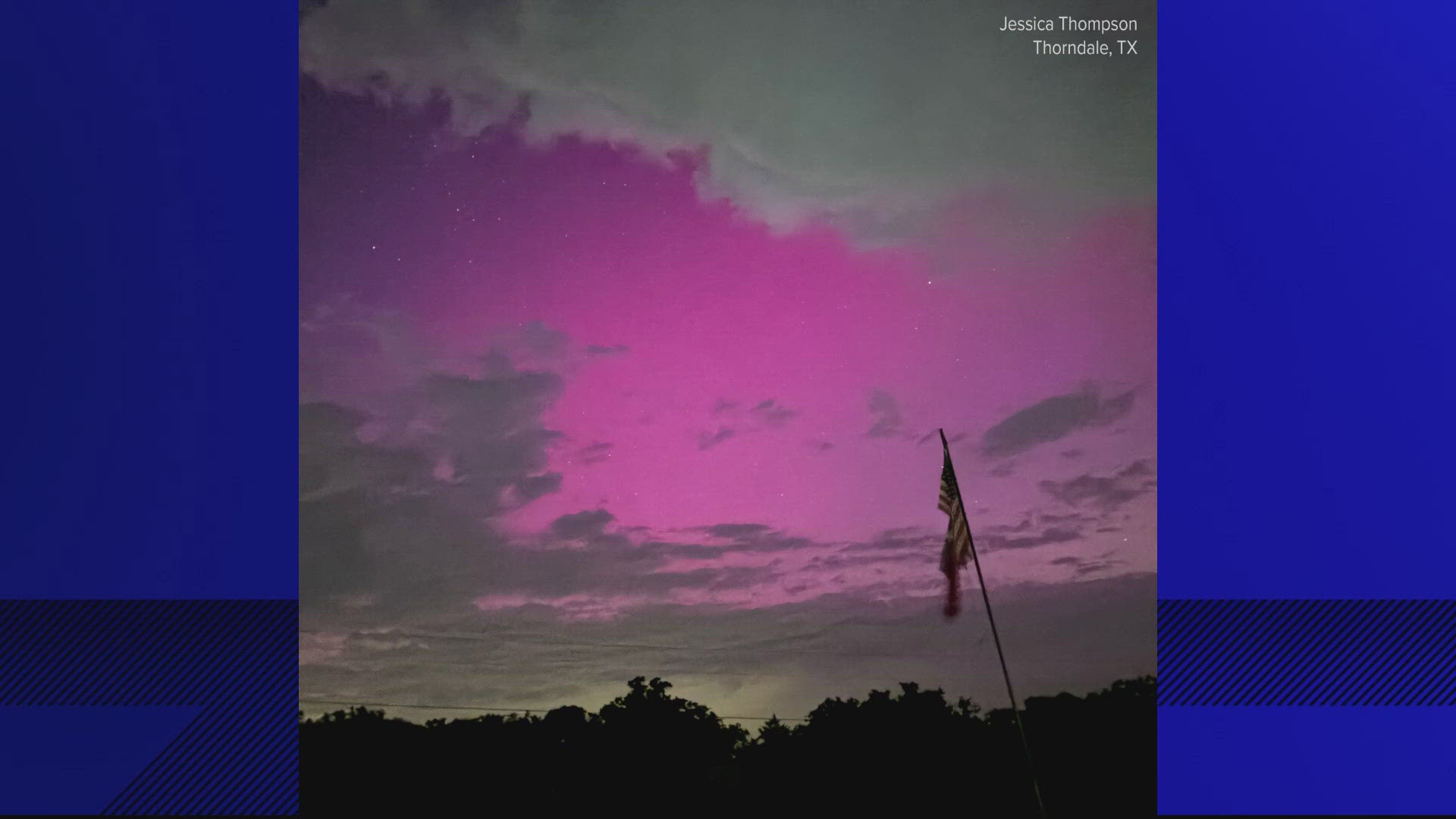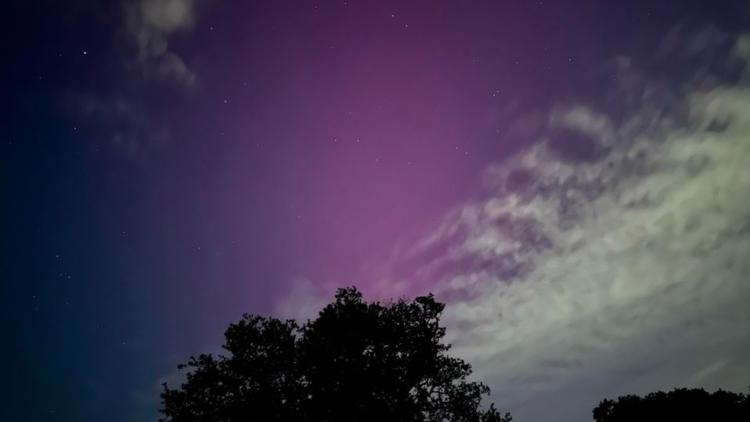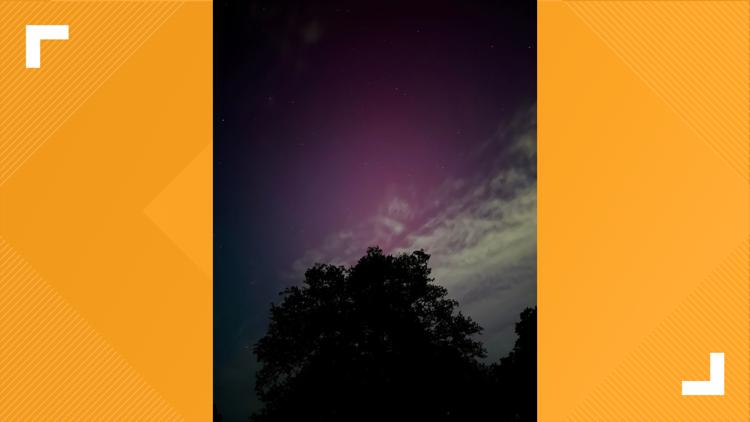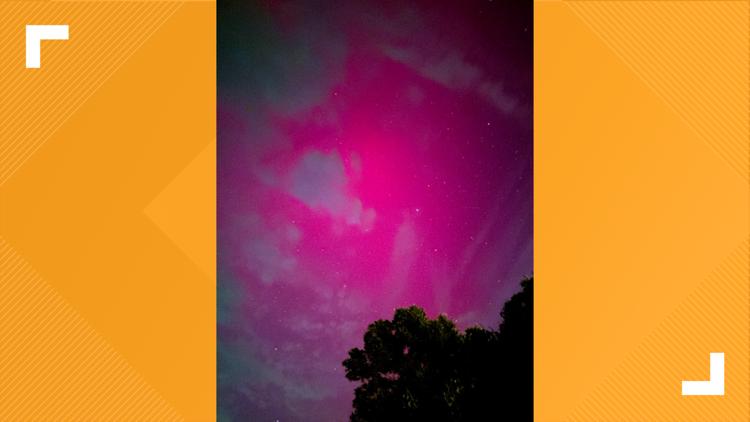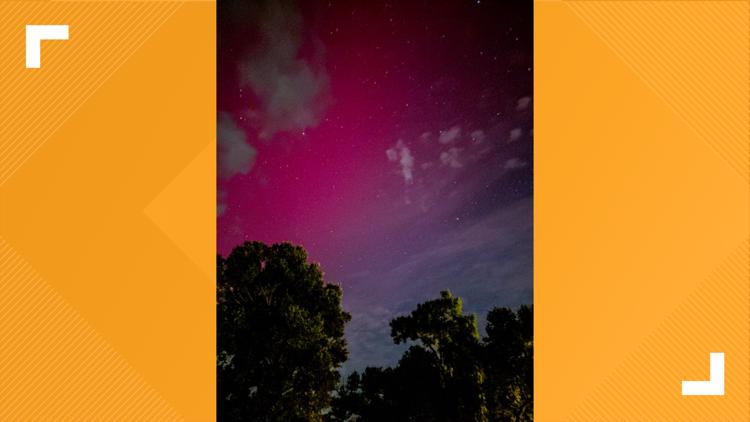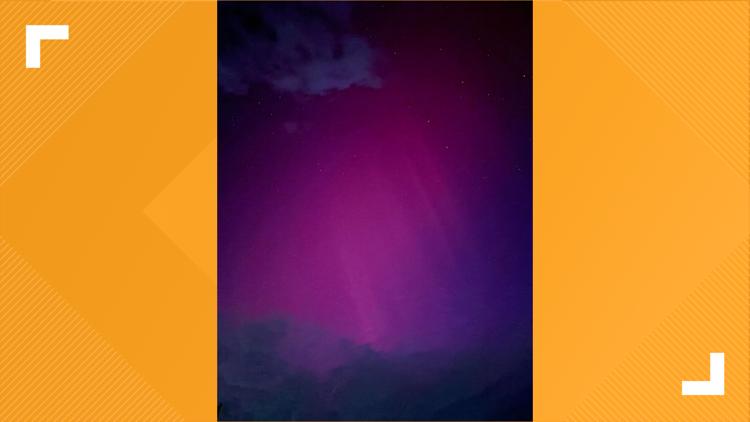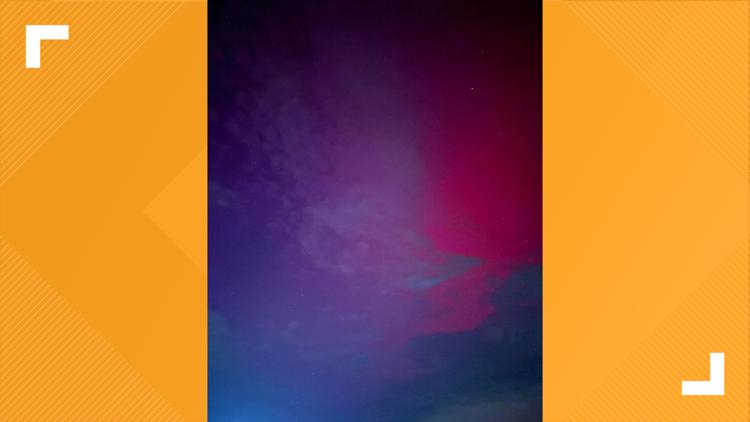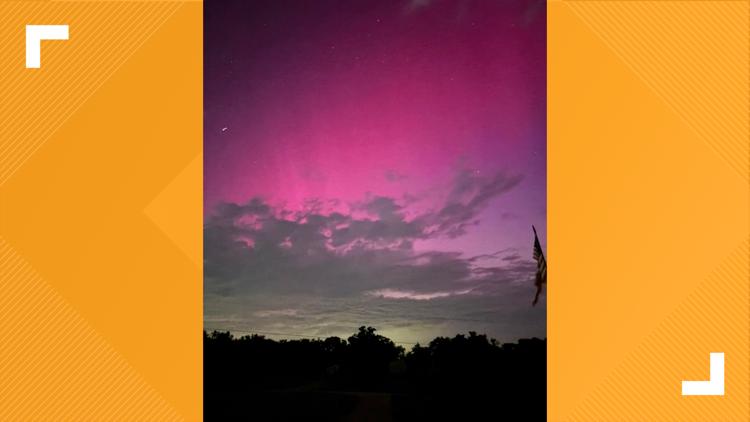AUSTIN, Texas — "Aurora borealis? At this time of year? At this time of day? In this part of the country?"
This weekend's unusually strong solar storm hitting Earthy won't be like that episode of "The Simpsons," but parts of Texas could get a glimpse of the northern lights.
Forecasters at the National Oceanic and Atmospheric Administration (NOAA) issued a rare severe geomagnetic storm warning as a solar outburst reached Earth on Friday. The effects are expected to last through the weekend.
Where can you see the northern lights?
NOAA said the storm could produce the northern lights as far south in the U.S. as Alabama and Northern California. But experts say it will be possible to see in parts of North Texas as well.
Friday night, some Texans were able to spot the aurora borealis in Thorndale, which is about 45 miles northeast of Austin.
PHOTOS: Aurora borealis in Central Texas
NOAA alerted operators of power plants and spacecraft in orbit to take precautions, as well as the Federal Emergency Management Agency (FEMA).
“For most people here on planet Earth, they won’t have to do anything,” Rob Steenburgh, a scientist with NOAA’s Space Weather Prediction Center, said.
The storm could produce northern lights as far south in the U.S. as Alabama and Northern California, according to NOAA. But it was hard to predict, and experts stressed it would not be the dramatic curtains of color normally associated with the northern lights, but more like splashes of greenish hues.
“That’s really the gift from space weather – the aurora,” Steenburgh said.
He and his colleagues said the best aurora views may come from phone cameras, which are better at capturing light than the naked eye.
Snap a picture of the sky and “there might be actually a nice little treat there for you,” according to Mike Bettwy, operations chief for the prediction center.
The most intense solar storm in recorded history, in 1859, prompted auroras in Central America and possibly even Hawaii. “We are not anticipating that,” but it could come close, according to NOAA space weather forecaster Shawn Dahl.
This storm – ranked 4 on a scale of 1 to 5 – poses a risk for high-voltage transmission lines for power grids, not the electrical lines ordinarily found in people's homes, Dahl told reporters. Satellites also could be affected, which in turn could disrupt navigation and communication services here on Earth.

